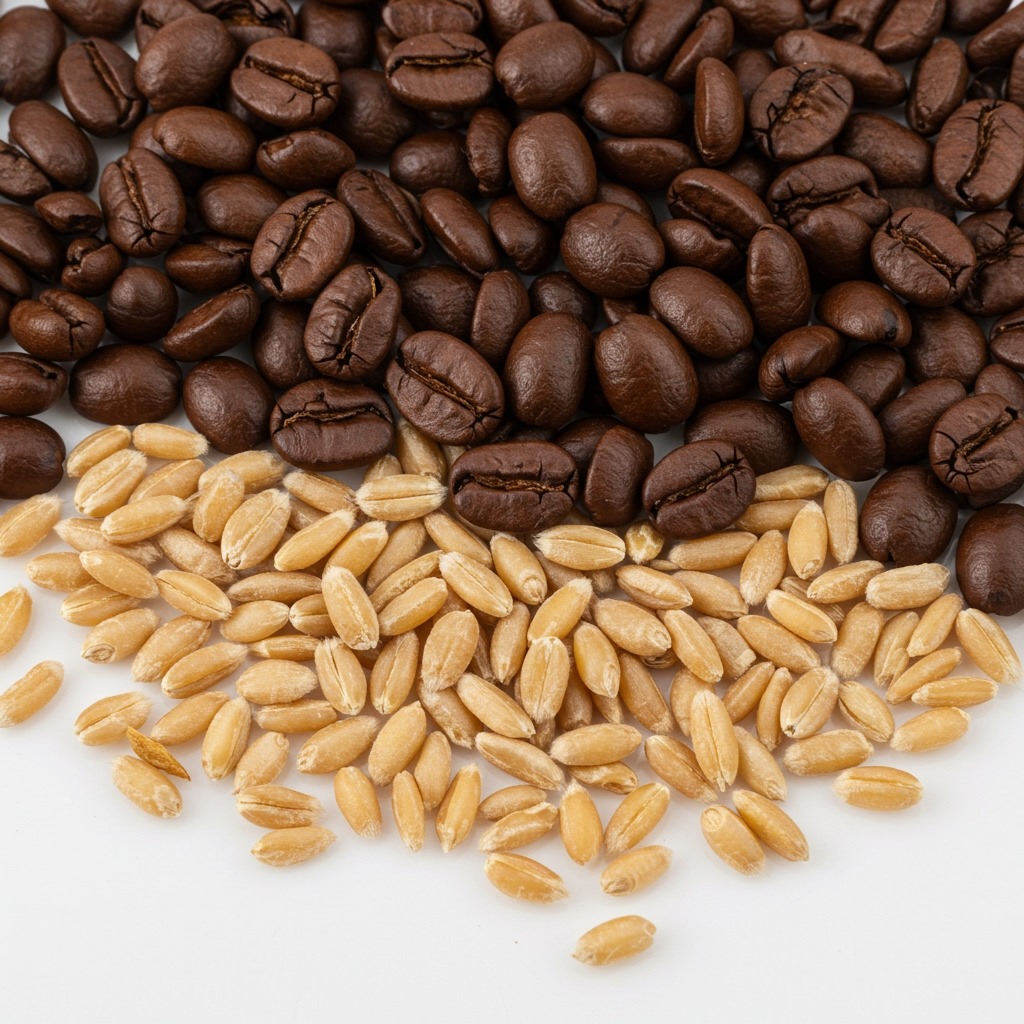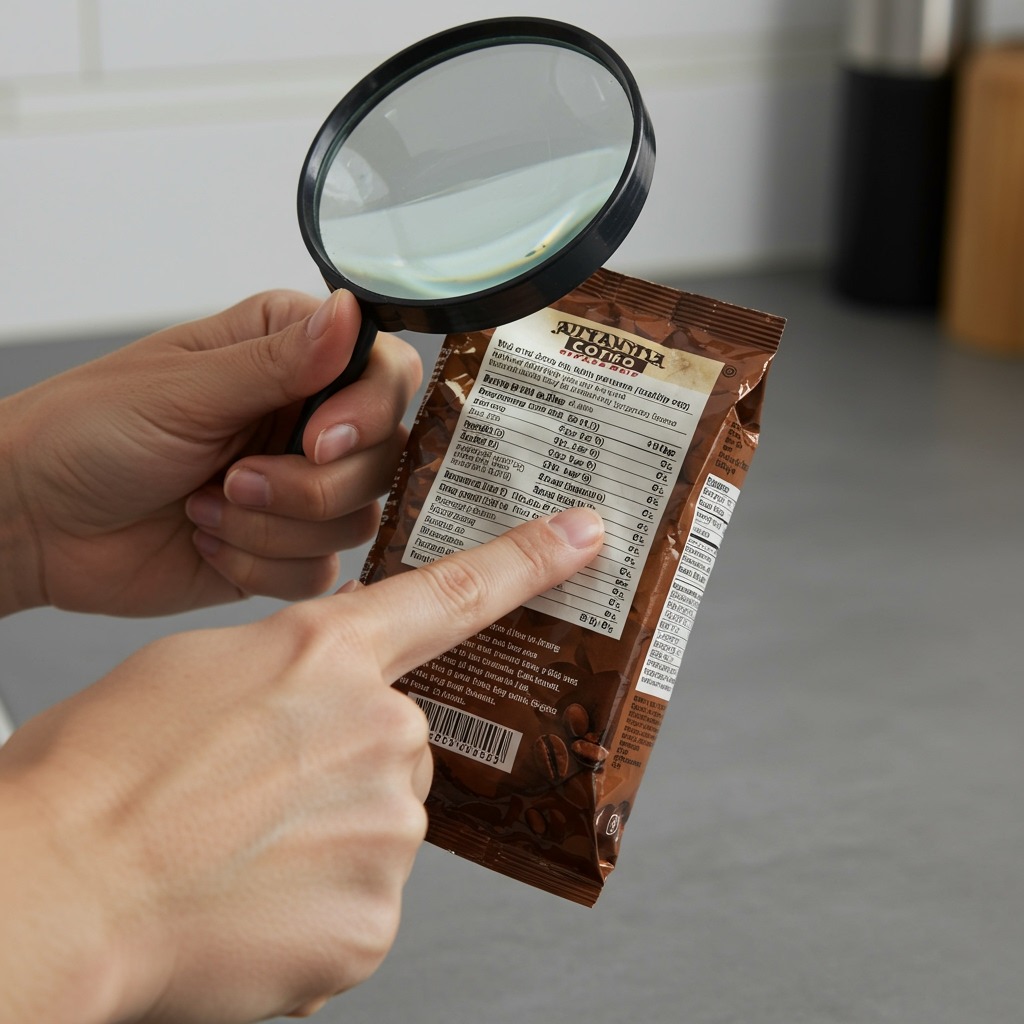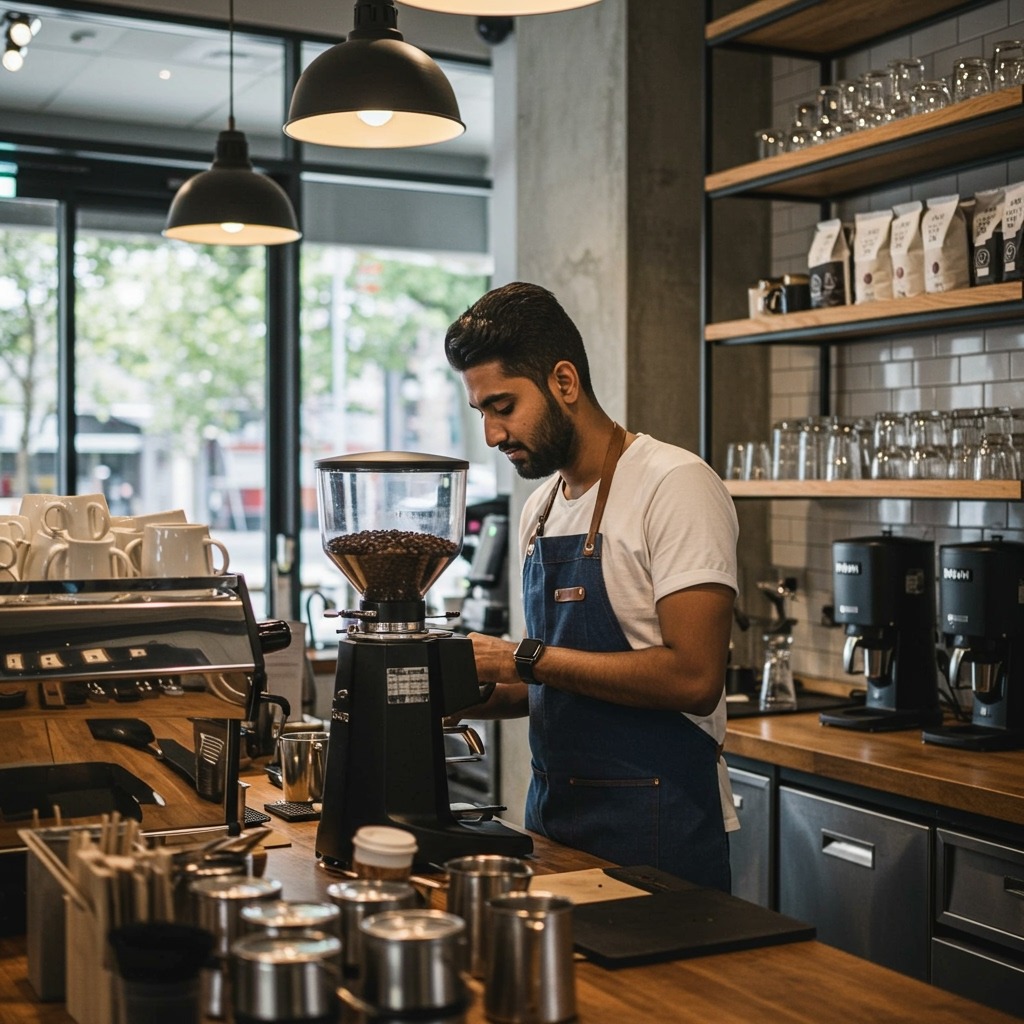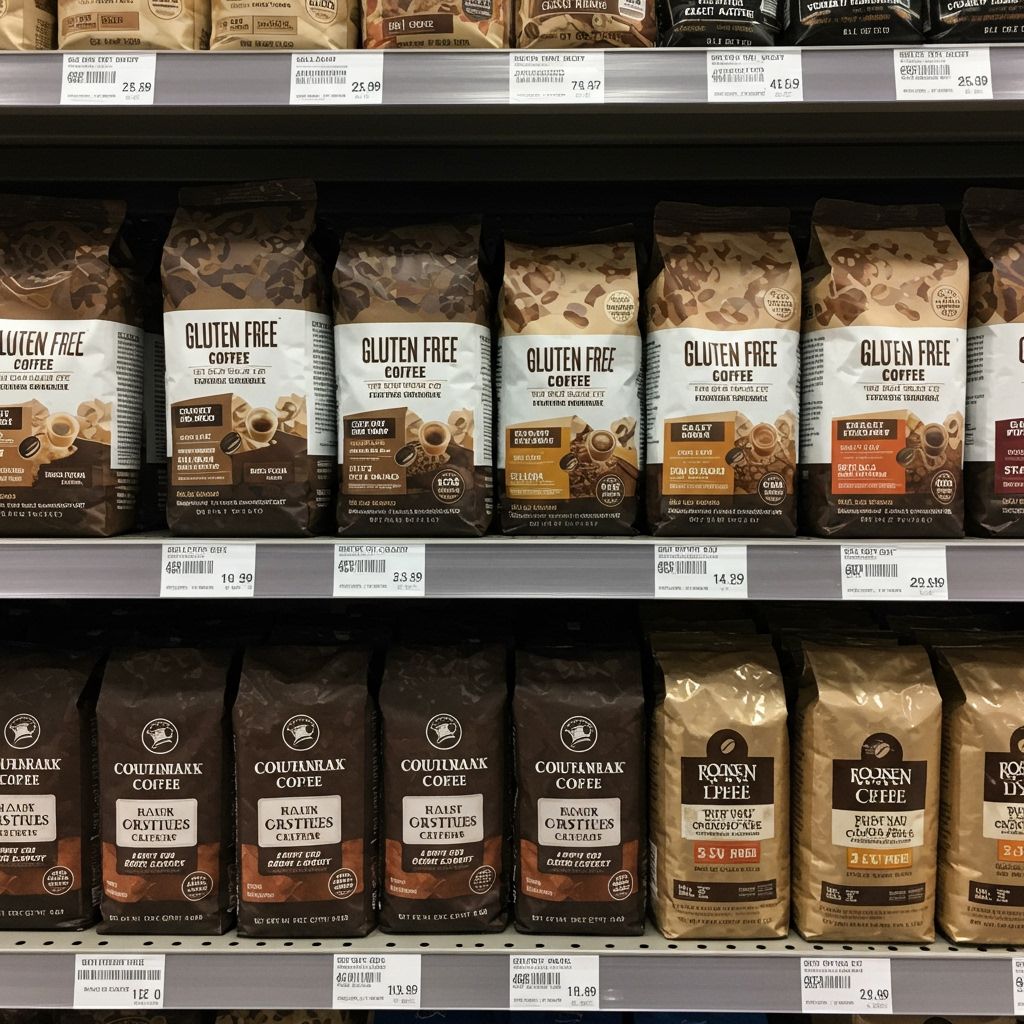That morning cup of coffee – for many, it’s a cherished ritual, a comforting aroma, a necessary kickstart to the day. But if you’re one of the millions navigating a gluten-free lifestyle, whether due to celiac disease, gluten sensitivity, or personal preference, a crucial question brews: is your beloved coffee safe? You might find yourself wondering, is coffee gluten free?
With the rise in gluten awareness, this question has become increasingly common. The good news is that the answer is often yes, but it’s not always a simple black and white (or perhaps, black and cream!). This guide will walk you through the straightforward facts, uncover the hidden complexities where gluten might lurk, and empower you to enjoy your coffee confidently and safely.
The Basics: Is Plain Coffee Gluten Free?
Let’s start with the most fundamental point: Yes, pure, unadulterated coffee beans are naturally 100% gluten-free.
To understand why, it helps to know what gluten is. Gluten is a general name for the proteins found in wheat (like wheatberries, durum, emmer, semolina, spelt, farina, farro, graham, and einkorn), rye, barley, and triticale (a cross between wheat1 and rye). These proteins give dough its elasticity and chewy texture.
Coffee beans, on the other hand, are the seeds of coffee cherries, which grow on coffee plants (genus Coffea). They are entirely unrelated to gluten-containing grains. So, if you’re holding a plain, unflavored coffee bean, or a cup of black coffee brewed from such beans, you’re holding something that is inherently gluten-free.
Where Gluten Can Sneak In: Potential Risks for Coffee Drinkers
While coffee beans themselves are safe, the journey from bean to cup can introduce risks of gluten contamination or added gluten ingredients. This is where vigilance becomes key for anyone needing to strictly avoid gluten.
Flavored Coffees: The Flavor Factor
Those enticing hazelnut, vanilla, or caramel-flavored coffee beans or grounds can be a gray area.
- How Flavorings are Added: Flavors are typically added to roasted coffee beans as oils or syrups.
- The Risk: While many modern flavorings are gluten-free, some, particularly older or less expensive formulations, might historically have used barley malt as a base or carrier ingredient due to its sweet, toasty notes. Barley, as we know, contains gluten.
- Current Status: The risk from most commercially available flavored coffee beans and grounds in the U.S. is generally considered low today, as manufacturers have become more aware of allergen concerns. However, it’s not zero.
- What to Do: If you enjoy flavored coffees, look for products explicitly labeled “gluten-free.” If there’s no such label, it’s wise to check the ingredient list (if available for flavorings) or contact the coffee manufacturer directly to confirm the gluten-free status of their flavorings.
Instant Coffees & Mixes: Convenience with Caveats
Instant coffee crystals and pre-mixed coffee beverages (like 3-in-1 sachets containing coffee, creamer, and sugar) offer convenience but require careful scrutiny.
- Hidden Ingredients: Some instant coffee products might contain gluten-based fillers, anti-caking agents to prevent clumping, or even sweeteners derived from wheat or barley. For example, wheat flour has sometimes been used as a bulking agent or to improve texture.
- Malt: Watch out for “malt” or “malted barley extract” in the ingredient list of sweetened or specialty instant coffee mixes, as this is a definite source of gluten.
- Action Plan: Always, always read the ingredient list carefully on any instant coffee or coffee mix. If you’re unsure about an ingredient, it’s best to avoid it or contact the manufacturer.
Cross-Contact: The Invisible Threat
Cross-contact (often mistakenly called cross-contamination) occurs when gluten-free food comes into contact with gluten, making it unsafe for individuals with celiac disease or severe gluten sensitivity. This is a significant concern with coffee.
- At the Roastery/Processing Plant: While dedicated coffee roasters are unlikely to process gluten grains, larger food processing plants that handle a variety of products might pose a risk if shared equipment isn’t meticulously cleaned. This is less common for pure coffee but can be a factor.
- In Grocery Stores:
- Bulk Bins: Avoid buying coffee beans from bulk bins. The scoops can be shared between gluten-containing grains and coffee beans, and there’s a high risk of airborne flour or particles settling into the coffee.
- Shared Grinders: Many grocery stores have coffee grinders for customer use. These are often used for both plain and flavored coffees. If a previously ground flavored coffee contained gluten, your plain beans could pick up residue.
- At Coffee Shops: This is a major potential hotspot for cross-contact.
- Shared Grinders: Baristas often use the same grinders for different types of beans, including potentially gluten-containing flavored ones (though this is less common now).
- Steam Wands: A significant risk if you’re ordering a latte or cappuccino with milk or a dairy alternative. If the steam wand was previously used to steam oat milk that isn’t certified gluten-free (oats are highly susceptible to cross-contact with wheat during growing and processing), it can transfer gluten to your drink.
- Shared Utensils & Surfaces: Spoons, counters, and even the barista’s hands can transfer gluten particles from pastries, sandwiches, or other gluten-containing items to coffee preparation areas or your cup.
- At Home:
- Shared Grinders: If your home grinder is also used for anything containing gluten (like grinding gluten-containing grains for flour, though this is rare), it’s a risk.
- General Kitchen Cross-Contact: Toasters near your coffee station, using the same cutting board for bread and then placing your coffee items on it, or contaminated countertops can all lead to issues.
Coffee Shop Concoctions: Beyond Black Coffee
Once you move beyond plain black coffee in a cafe, the gluten risks multiply.
- Syrups and Sauces: Many flavored syrups (vanilla, caramel, hazelnut) are gluten-free, but it’s not universal. Some chocolate or specialty sauces could contain malt or wheat-derived ingredients. Always ask the barista to check the labels.
- Powders and Toppings: Malted milk powder is a classic gluten source. Sprinkles, cookie crumbles, or other crunchy toppings are often gluten-containing.
- Whipped Cream: Plain whipped cream is usually gluten-free, but some pre-made or flavored versions might have added stabilizers or flavorings containing gluten.
- Oat Milk: As mentioned, oat milk is a tricky one. Oats themselves are naturally gluten-free, but they are very often contaminated with wheat during farming and processing. Only use oat milk that is certified gluten-free, and be mindful of steam wand cross-contact.
Coffee Substitutes: Not Actually Coffee
It’s important to distinguish true coffee from coffee substitutes. Many beverages marketed as coffee alternatives are made from roasted barley, rye, chicory, or other grains. These are not coffee and frequently contain gluten. Always check the ingredients if you’re trying a “coffee-like” beverage that isn’t 100% coffee.
The Coffee Protein Cross-Reactivity Debate
You might occasionally hear or read about a theory suggesting that certain proteins in coffee are structurally similar enough to gluten proteins that they could trigger an immune response in some highly sensitive individuals with celiac disease, even if no actual gluten is present. This is often termed “cross-reactivity.”
- Scientific Stance: It’s important to note that this theory is not widely supported by major celiac disease research organizations as a common or significant issue for the vast majority of people with celiac disease. Most adverse reactions to coffee in this population are more likely attributable to actual gluten cross-contact, caffeine sensitivity, GERD (acid reflux exacerbated by coffee’s acidity), or intolerance to other components like dairy if added.
- Individual Sensitivity: That said, a very small subset of individuals might experience symptoms. If you have celiac disease, strictly avoid gluten, and still react negatively to plain, verified gluten-free coffee, it’s a conversation to have with your doctor or a dietitian specializing in celiac disease. They can help you explore other potential causes.
How to Ensure Your Coffee is Gluten-Free: Practical Steps
Knowledge is power! Here’s how you can proactively ensure your coffee experience remains gluten-free:
Choosing Your Beans/Grounds
- Go Whole Bean: The safest option is often to buy plain, unflavored whole coffee beans and grind them yourself at home using a dedicated gluten-free grinder.
- Look for “Gluten-Free” Labels: Many coffee brands now explicitly label their products as “gluten-free.” This indicates the company has taken steps to ensure their product meets the FDA standard for this claim.
- Verify Flavored Coffees: If you love flavored coffee, don’t just assume it’s safe. Check the packaging for a gluten-free claim or ingredients. If in doubt, contact the coffee company directly. Their customer service can usually provide information on allergens.
Brewing at Home Safely
- Dedicated Equipment: If possible, use a coffee grinder that is only used for coffee beans and not for any gluten-containing grains or spices that might have gluten-containing anti-caking agents.
- Cleanliness is Key: Ensure your coffee maker, filters, mugs, spoons, and any other utensils are thoroughly cleaned and haven’t been in contact with gluten.
- Mind Your Add-Ins: Plain milk, cream, and sugar are generally gluten-free. However, always double-check the labels on flavored coffee creamers, syrups, or specialty sweeteners, as these can sometimes contain hidden gluten.
Read more: Can You Eat Coffee Beans? Benefits, Risks & Tips
Navigating the Coffee Shop Gluten-Free
Ordering coffee at a cafe requires clear communication and a bit of detective work.
- Speak Up: Clearly inform the barista that you need a gluten-free drink due to celiac disease or severe gluten sensitivity. Use confident, polite language.
- Ask About Procedures: Inquire about their practices for preventing cross-contact. For example: “Do you have a procedure for making gluten-free drinks to avoid cross-contact?”
- Simplest is Safest: Plain black coffee – like a brewed coffee, espresso, or Americano – is usually your safest bet, as it involves minimal ingredients and handling.
- Question Syrups & Sauces: If you want a flavored latte, ask to see the ingredient label on the syrup bottle or have the barista confirm its gluten-free status. Many common syrups are gluten-free, but it’s always best to verify.
- Beware Blended & Topped Drinks: Frappes, milkshakes, and drinks with many toppings (cookie crumbles, malt powder, certain sprinkles) are high-risk. It’s often best to avoid these unless the shop has specific, verified gluten-free versions.
- Oat Milk & Steam Wands: If ordering a drink with oat milk, confirm it’s certified gluten-free. Then, ask if they can use a freshly cleaned steam wand or if they have a dedicated steam wand for non-dairy milks (especially certified GF oat milk) to prevent cross-contact from previously steamed regular oat milk or other potential contaminants.
Reading Labels: Your Best Defense
This applies to any packaged coffee product, creamer, or additive.
- Scan for Keywords: Look for “gluten,” “wheat,” “barley,” “rye,” or “malt” in the ingredient list. Also be wary of “yeast extract” or “natural flavors” if their source isn’t specified and you’re highly sensitive, though in the US, wheat as part of these would need to be declared.
- Understand “May Contain” Advisories: Phrases like “may contain wheat” or “processed in a facility that also handles wheat” are voluntary statements by manufacturers. They indicate a potential risk of cross-contact. Individuals with celiac disease often choose to avoid these products.
What About “Gluten-Free” Labeled Coffee?
You might see coffee – even plain, unflavored coffee – labeled as “gluten-free.” What does this mean?
- The FDA Standard: In the United States, for a product to be labeled “gluten-free,” it must comply with the Food and Drug Administration (FDA) regulations. This means the food must contain less than 20 parts per million (ppm) of gluten. This level is generally considered safe for most individuals with celiac disease. You can find more details on the FDA’s Gluten and Food Labeling page.
- Third-Party Certifications: Some products go a step further and get certified by third-party organizations (like the Gluten-Free Certification Organization – GFCO, which certifies to 10 ppm or less). These certifications often involve more stringent testing and facility audits, providing an extra layer of assurance.
- Why Label Plain Coffee? A company might label its plain coffee “gluten-free” to reassure consumers that they have processes in place to prevent cross-contact, especially if they also produce flavored coffees or other products in the same facility. It’s a mark of their awareness and commitment to safety.
FAQ: Your Coffee & Gluten Questions Answered
Q1: Is decaf coffee gluten-free?
A: Yes, generally. The decaffeination process itself (whether using water, solvents, or CO2) does not add gluten. The same considerations apply to decaf as to regular coffee: plain, unadulterated decaf beans are gluten-free, but risks can arise from flavorings, instant versions, or cross-contact.
Q2: Can celiacs drink coffee?
A: Absolutely, provided it’s plain, uncontaminated coffee. The primary concern for individuals with celiac disease is avoiding cross-contact and ensuring any additives (like flavorings, creamers, or syrups) are gluten-free.
Q3: Does coffee from major chains like Starbucks have gluten?
A: Plain brewed coffee and espresso at most major coffee chains are typically gluten-free. However, the risk of gluten exposure significantly increases with flavored drinks, blended beverages, seasonal specials, and food items sold alongside. Cross-contact from shared equipment (especially steam wands with non-certified oat milk) is a real possibility. It’s vital to communicate your needs clearly, ask questions about ingredients and preparation, and opt for simpler drinks if you have celiac disease or high sensitivity. Always check the company’s most current allergen information if available.
Q4: Are coffee creamers gluten-free?
A: Many coffee creamers are gluten-free, but not all. Some powdered creamers might use wheat derivatives as fillers, and some liquid flavored creamers could contain gluten in their flavoring systems or thickeners (though this is less common now). Always check the ingredient label. Look for “malt” or wheat-based ingredients.
Q5: If I react negatively to coffee, does it automatically mean it has gluten?
A: Not necessarily. There are many reasons someone might react to coffee. It could be sensitivity to caffeine (causing jitters, anxiety, or stomach upset), the natural acidity of coffee (triggering acid reflux or GERD), an intolerance to dairy if you add milk or cream, or a sensitivity to other compounds in coffee. If gluten is a concern for you, thorough investigation into potential cross-contact or hidden ingredients is warranted, but don’t assume gluten is the culprit without exploring other possibilities.
Sip with Confidence: Enjoying Coffee Gluten-Free
So, is coffee gluten free? For plain, unadulterated coffee beans, the answer is a resounding yes. The complexities arise from what happens after the bean is harvested – flavorings, instant coffee formulations, coffee shop preparations, and the ever-present risk of cross-contact.
By being an informed consumer, reading labels diligently, asking the right questions, and taking precautions both at home and when out, you can confidently continue to enjoy your coffee ritual as part of a gluten-free lifestyle. Your daily cup can remain a safe and satisfying pleasure.




